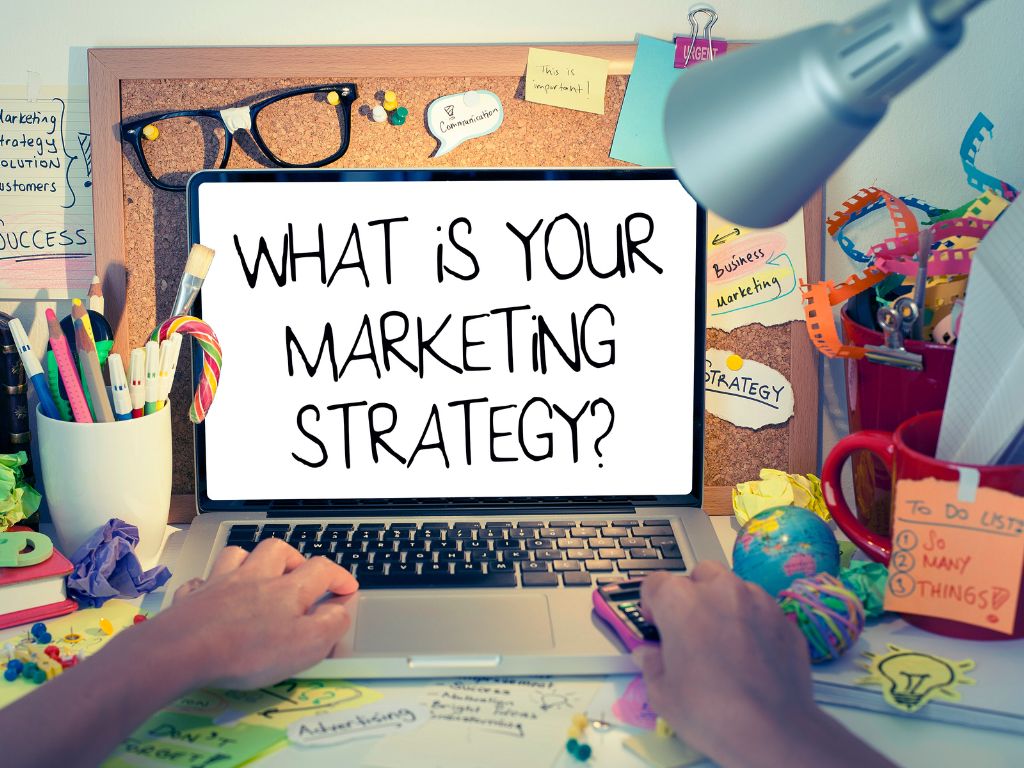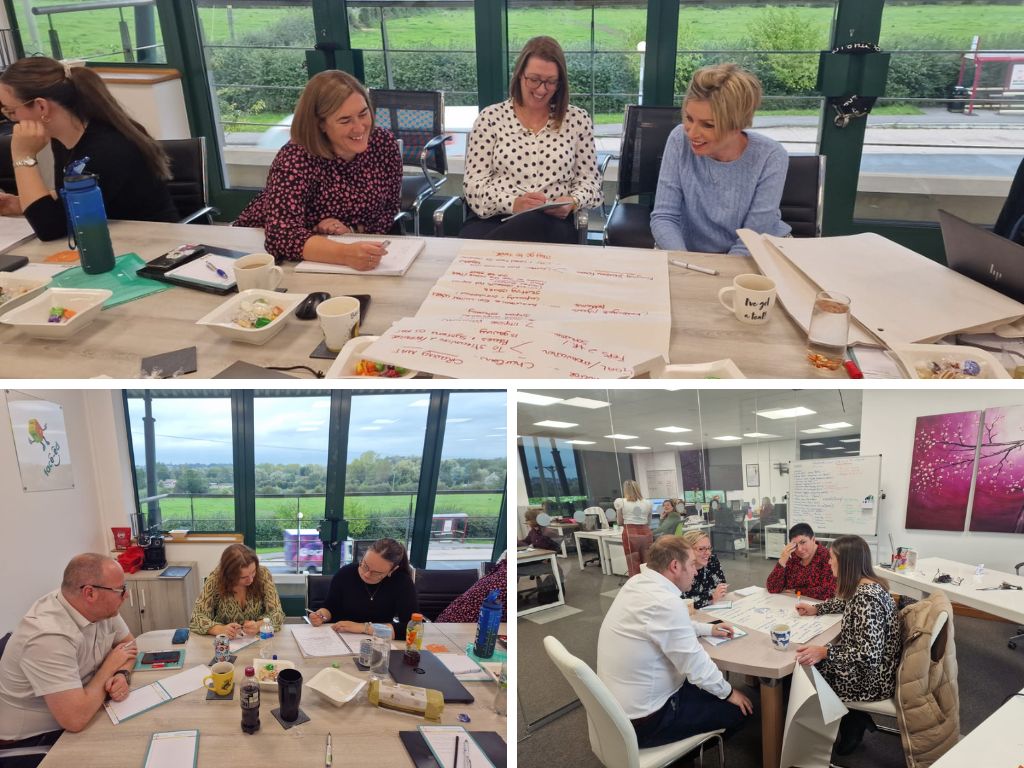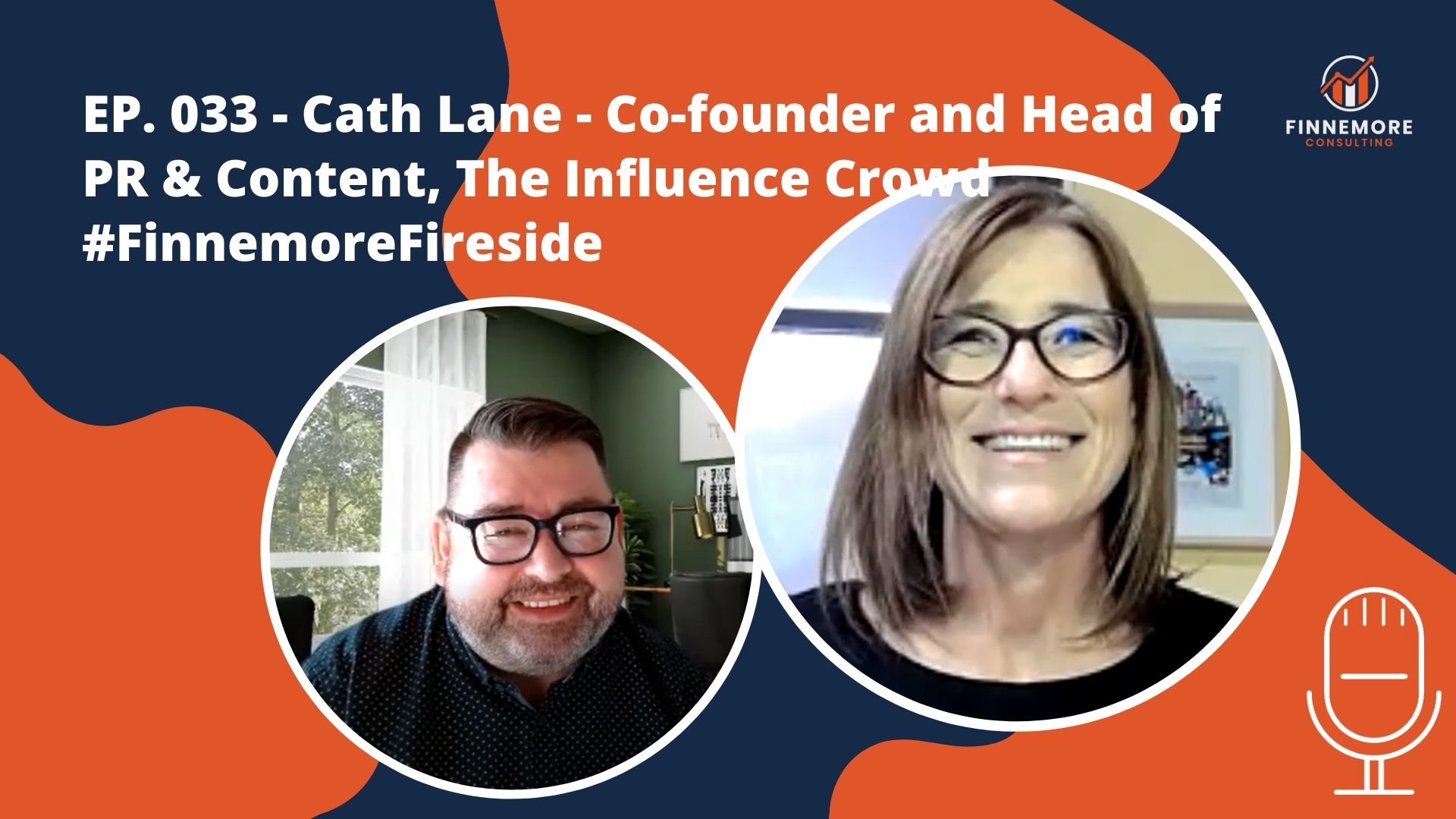Leveraging Customer Testimonials: Your Secret Weapon in Edtech



When you’re reaching out to people in the edtech field, it’s crucial to get your message right. Here’s a straightforward four-step plan to help you write emails and messages that hit the mark:
1. Understand and acknowledge their problems
Start by showing that you get what they’re going through and acknowledge the challenges they face in education or technology. This helps build trust and shows you’re genuinely interested in helping them.
2. Explain how you can help
Next, explain how your Edtech solution can solve their problems. Keep it simple, focus on the benefits, and avoid using technical language that might confuse them. Be clear about how your solution can make their lives easier.
3. Share proof of success
Back up your claims with real evidence. Share stories or data that show how your solution has helped others like them. This helps build credibility and makes your message more convincing.
4. Ask them to take action
Finally, tell them what you want them to do next. Whether it’s trying out your product or scheduling a demo, make it easy for them to take the next step. Be direct and clear about what you’re asking for.
The key is to keep it short, don’t over-explain, and make it about them and not you!

Creating a Marketing Strategy can feel complicated but it can essentially be boiled down into three stages:
In the first stage (the awareness stage) you’re literally just trying to make potential customers aware that you exist.
You’ve got a stellar product or service, but guess what? Nobody knows about it. That’s where the awareness stage comes into play. This is your chance to shout from the rooftops (metaphorically, of course) and let the world know that you exist.
But how do you do that? Well, it’s all about getting your name out there. Think social media campaigns, content marketing, and good old-fashioned networking. The goal here is simple: make potential customers aware of your presence in the market.
Remember, Rome wasn’t built in a day, and neither is brand awareness. It takes time and consistent effort to get noticed, so don’t get discouraged if you don’t see results overnight.
In the second stage (the consideration stage) you have to convince your customers to buy from you over your competition.
Okay, so you’ve piqued the interest of your target audience. Now what? It’s time to convince them that your offering is the best thing since sliced bread (or avocado toast, if that’s more your style).
This is where the consideration stage comes into play. Your potential customers are weighing their options, comparing you to your competitors, and trying to decide who to give their budget to.
But here’s the thing: it’s not just about having a killer product or service. It’s also about the experience you provide. Put yourself in your customers’ shoes for a moment. Would you rather buy from a company that treats you like just another number, or one that goes above and beyond to make you feel valued?
Customer experience is key. So don’t just focus on showcasing what you’re selling; focus on how you’re selling it. It makes all the difference.
The third stage (the retention stage) involves building community and convincing your customer to purchase again.
The retention stage is all about keeping your customers coming back for more. Why? Because repeat customers are the lifeblood of any business. Not only do they contribute to your bottom line, but they also serve as brand ambassadors, spreading the word and bringing new customers into the fold.
So how do you keep them coming back for more? Build a sense of community. Make your customers feel like they’re part of something bigger than themselves. Whether it’s through loyalty programs, exclusive offers, or simply engaging with them on social media, show them that you appreciate their business and value their loyalty.
Remember, a happy customer is a loyal customer. So don’t just focus on making the sale; focus on building relationships that last a lifetime.
These are the basic three stages you need to consider when creating your marketing strategy. Of course, there are tactics and activities that need to be planned and actioned to go with it but, strategically, this is a great blueprint.
Does your Marketing Strategy cover these three stages?

If you’re losing sales then it’s usually down to these very basic reasons (despite what sales gurus might tell you!):
1. You’re missing the mark on value.
If what you’re offering doesn’t solve a problem or make life easier for your customers, they’re not going to buy. It’s as simple as that.
2. You’re not really listening.
Ever been on the phone with a salesperson who just talks at you? Not fun. Listening to what the customer needs is the first step to making a sale.
3. You’re jumping the gun.
Nobody likes feeling rushed. Pushing for a sale before you’ve built any kind of relationship is a surefire way to turn people off.
4. You’re wasting time on dead ends
Not all leads are worth pursuing. Learn to spot the ones that are just going to waste your time.
5. You’re ignoring objections
Brushing off concerns instead of addressing them only makes the customer more hesitant. Take objections seriously and work through them.
6. You’re forgetting to follow up
Out of sight, out of mind. Don’t let prospects forget about you—follow up and stay on their radar.
7. You’re making things complicated
Keep it simple. A confusing sales process is a sure way to lose customers.
8. You’re pretending competitors don’t exist.
Know your enemy. No solution is so unique that it doesn’t have any competition. Ignoring the competition won’t make them go away—it’ll just leave you in the dust.
9. You’re blending in instead of standing out.
If you’re just another fish in the sea, why should anyone choose you? Find your unique selling point and shout it from the rooftops.
10. You’re skipping the relationship-building part.
People buy from people they like. Take the time to build relationships—it’ll pay off in the long run.
Losing sales feels awful but it’s not the end of the world. Learn from your mistakes, tweak your approach, and carefully rebuild your pipeline being mindful of the above.
Is there anything I’ve missed? What would you add?
#sales #selling #edtech #pipeline #relationships #closing #saleprocess #edtech

Whether you’re navigating interviews, Q&A sessions, or engaging in conversations with stakeholders, mastering the art of media training can be the key to success as it keeps the focus ON the things you want to talk about and AWAY from those you don’t.
Here are three key tips I learnt in media training to elevate your communication game:
1. Know your North Star
The key to a good Q&A is don’t answer the question you’re asked, answer the question you wish you were asked. If there’s a crucial message you want to get across, that’s your North Star. Practice answering questions that lead you back there.
Then if they keep commenting on something trivial or something you don’t know well, you can bring the conversation back to what matters.
2. Don’t speak for others.
If somebody says “You must be shocked by your competitors’ collapse” don’t take the bait. Instead say you’ll let that person comment on their situation, and then bring the conversation back to your area of focus.
3. Have command of two or three recent statistics that support your perspective.
You don’t need to be a walking encyclopaedia, but a few stats are very compelling. Make sure they are no more than two or three years old, and that you can cite your sources.
What More Can You Do?
While the strategies above are indispensable, there’s always room for refinement. Here are a few additional tips to enhance your performance during Q&A sessions and interviews:
4. Active Listening: Pay close attention to the questions posed to you. Understanding the intent behind each query allows you to tailor your responses more effectively.
5. Authenticity: Stay true to your brand and values. Authenticity resonates with audiences far more than rehearsed or scripted responses.
6. Bridge Techniques: Master the art of bridging—seamlessly transitioning from the question asked to the point you wish to convey. This technique allows you to maintain control over the conversation.
7. Practice, Practice, Practice: Like any skill, effective communication requires practice. Engage in mock interviews, seek feedback, and continuously refine your approach.
By harnessing these insights and refining your communication skills, you’ll be better equipped to give interviews which drive your vision forward with clarity and conviction.
What else would you add? What do you find helps when you’re involved in Q&A sessions or interviews?

It’s not every day you get to combine your passion for product marketing with a fantastic team, and yesterday was one of those days! I had a great time delivering a workshop on Messaging and Value Propositions with Fusion Education People Solutions, and here’s why:
1. Working with the Fusion Education People Solutions team was an absolute delight.
Their enthusiasm and dedication to improving their messaging and value propositions were infectious. It’s inspiring to collaborate with professionals who are committed to enhancing their skills and delivering top-notch results to their clients.
2. Interactive Learning.
Our workshop was all about hands-on learning, and everyone was eager to dive in. From empathy mapping to defining unique value propositions, the participants were engaged, asked thoughtful questions, and shared their own experiences.
3. Team Collaboration
Fusion Education People Solutions fosters a culture of collaboration and creativity. The team’s willingness to brainstorm, refine ideas, and explore new approaches was truly impressive – it will undoubtedly set them apart in their industry.
Thank you, Fusion, for inviting us to work with your team.
To all the participants, keep honing those messaging and value proposition skills! Your dedication to improvement will undoubtedly lead to great success 💪
This workshop was designed to brainstorm key concepts around marketing strategy. We provide a fresh pair of eyes on areas which need to be revisited often to remain competitive, the objective being to create compelling messaging and to highlight the areas which could be better developed in order to grow market share. If you’d like to discuss something similar for your business, drop me an email at nick@finnemoreconsulting.com.

The So What? test is nothing new but I thought it would be worth covering here as it’s something I have discussed with a number of people this week.
If you’re unfamiliar with the So What? test then there are lots of great books out there on it but, in essence, it is the practice of looking at your messaging and asking yourself “so what?” Are you talking about what matters most to your audience? The idea is to help you focus on what’s important to your client base and communicate effectively as a result.
To give you an example, how many presentations have you seen that start with an introductory slide listing facts about the company? A typical first slide will usually contain some company facts along the lines of:

While these facts are important to your company, the client’s response will probably be so what? So you were established in 2012, so what? Why is that important to me?
It’s crucial to always look through your messaging, and particularly opening slides such as these where this will often be your first contact with your potential client, and ask yourself so what? And keep asking yourself so what until you get to a satisfactory answer.
So, for the example above, let’s do the So What? Test on the first bullet point
So what? Well, it means we’ve been in business for a few years now.
So what? So we’re not going anywhere, we’re established and have a good reputation.
So what? Customers can trust us.
By asking so what you can usually find a better way of getting that message across. In the case of the above, a much stronger opening bullet point would have been something along the lines of:
Try it with the other bullet points and see what you come up with. Try it with your own messaging and share the results. I know this has helped lots of companies in the past so hopefully, it will help yours too.

When it comes to selling to the education sector, using discounting as a strategy to close a sale may seem tempting. However, this approach may not be a good approach. Here’s why you should steer clear of discounting tactics and focus on building value instead.
1. It diminishes your perceived value
Offering discounts can inadvertently devalue your product or service in the eyes of potential buyers. The education sector places great emphasis on quality and long-term benefits. Instead of slashing prices, highlight the distinct advantages and tangible outcomes your offering brings to the table.
2. It seriously affects profit margins
Discounting erodes profit margins, which can have a significant impact on your business’s sustainability. In the long run, maintaining healthy margins allows for continuous innovation and the delivery of exceptional customer experiences. Focus on showcasing the unique value your product or service offers, rather than lowering prices.
3. It establishes unhealthy precedents
If you rely on discounting to close deals, you risk setting a precedent that can be difficult to break in the future. The education sector is a close-knit community, and word travels fast. Instead, aim to position your offering as a premium solution, tailored to meet the specific needs of schools or educational institutions.
4. Long-term relationships are better than short-term gains
Selling to the education sector requires a long-term mindset. Building strong relationships based on trust, credibility, and a genuine understanding of their challenges and goals is key. By focusing on the value your product provides and fostering partnerships, you’ll establish a foundation for sustained success.
So instead of discounting, aim to differentiate through quality and service. By emphasizing value, maintaining healthy profit margins, and building long-term relationships, you can position your product as a premium solution while meeting the unique needs of schools and educational institutions.
Success lies in creating meaningful connections and delivering exceptional experiences that transcend price.

Our next #FinnemoreFireside chat is essential listening for everyone who owns or leads an edtech business as it’s with marketing and PR guru, Catherine Lane.
Cath is Co-founder and Head of PR & Content at The Influence Crowd who work with some of the most well-known brands in education, including Juniper Education, Lexplore Analytics, Teach Active, SIMS BlueSky Education, GL Assessment, and Historic Royal Palaces.
The Influence Crowd implements highly targeted, integrated PR campaigns that prove their value through incoming leads and changed opinions. Using knowledge and relationships built up over 15 years in this sector, they engage and delight audiences through great coverage, shareable social content and by getting the key influencers behind edtech businesses.
This is an audio-only fireside chat (unfortunately the video tech got the better of us on the day 😕) and in it Nick and Cath discuss:
Enjoy!

Why are some businesses more successful than others?
Is it because they provide a better solution technically?
Is it because they were first to market?
Or is it just luck?
You could say all these statements are true, however, more often than not it is the way you look at a solution and how easy it is for a potential customer to purchase, on board, reduce their pain, and continue to enjoy the experience of working with your solution and business. It’s all about reducing friction.
We work and continue to work with several businesses across the edtech world and, in the main, the majority of companies that are not growing as quickly as they would like comes down to how hard are they making it for customers to either buy in the first place or make it hard for them to choose to stay, its all in your power to solve!
Look at your Customer Journey, look at every step, and understand when you are making it hard for the customer/user.
Ask yourself:
If you say yes to all these questions, ask one more! Are you looking at this from your perspective or the customer’s? If you answer from yours, as we know best, you are not reducing Friction!
Customer testimonials are one of THE biggest marketing tools you can have in your kitbag when it comes to selling in the education sector as peer-to-peer advocacy is everything.
Here’s why you should ask for them and share them:
1. They build trust.
Testimonials from satisfied customers serve as social proof, building trust and credibility in your brand. Potential customers are more likely to trust the experiences of their peers.
2. They help you win new business.
Positive testimonials showcase your product’s value proposition and demonstrate real-world benefits. They can be powerful tools in persuading potential customers to choose your EdTech solution over competitors.
3. They help you retain customers.
Happy customers are your best advocates. Sharing their positive experiences not only reinforces their loyalty but also encourages retention by highlighting the value your platform delivers.
If you don’t already, start gathering and sharing customer testimonials to increase brand presence and drive growth.
It’s #testimonialtuesday today so why not share one in the comments straight away! 👇